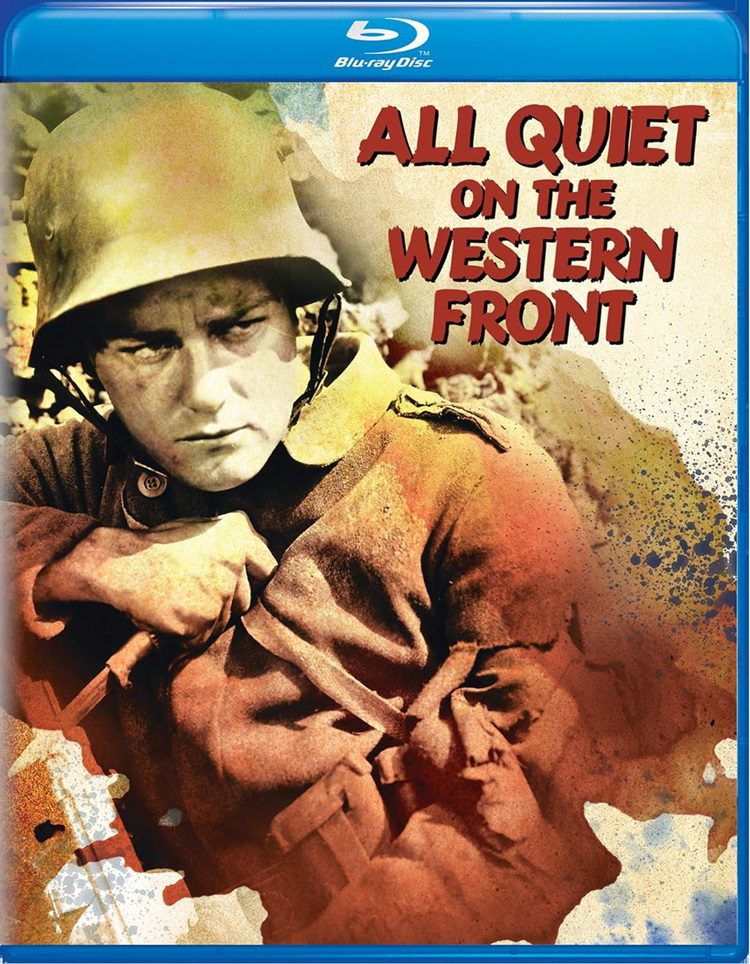
Lewis Milestone’s movie All Quiet on the Western Front comes from the novel of the same title by Erich Maria Remarque, and stars Lew Ayers as Paul Bäumer, a gung-ho student ready for war who ends a grizzled soldier reaching from the trenches in an attempt to capture a nearby butterfly. From the novel, we know his was a barely noticed death in France on a day when it was all quiet on the Western front.
Paul was, unfortunately, the student of a very pro-war teacher, Professor Kantorek. Never mind the use of the word “professor” here; Kantorek’s students are young, most looking sixteen or seventeen. Kantorek gives an amazing speech about how great it is to die for your country. He never says “win for your country,” it is always “die for your country.” His speech has great effect, and the entire class gets up to march together to enlist.
It takes maybe thirty seconds to change their minds about war. Their first exposure comes when their Staff Sergeant happens to be someone they know from town, and they expect to all get along nicely. Though Sergeant Himmelstoss is a bit of a caricature, he takes the job seriously and gets his “men” to work. They hate him instantly.
It is at this point that Lewis Milestone’s direction completely takes over the film. Sometimes he tags along behind the action and we see the one soldier who might make it up the hill. Other times, he sets up a perfectly square, non-moving frame so we can see the absolute cacophony that is war. It is hard to tell who is who and who is on which side as dirt and blood and bodies fly past our vision for what seems like up to five minutes of carnage sometimes.
All Quiet on the Western Front won a Best Picture Oscar. It is the first war talkie to win Best Picture, and the first movie to be based on a book to win Best Picture. It is a frightening look at the cost of war and is still relevant today.